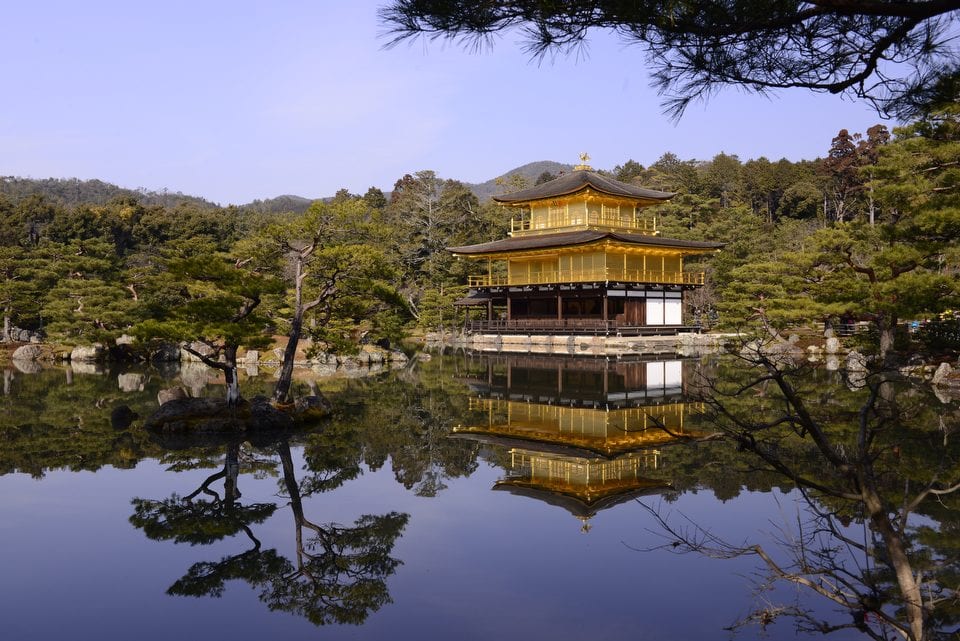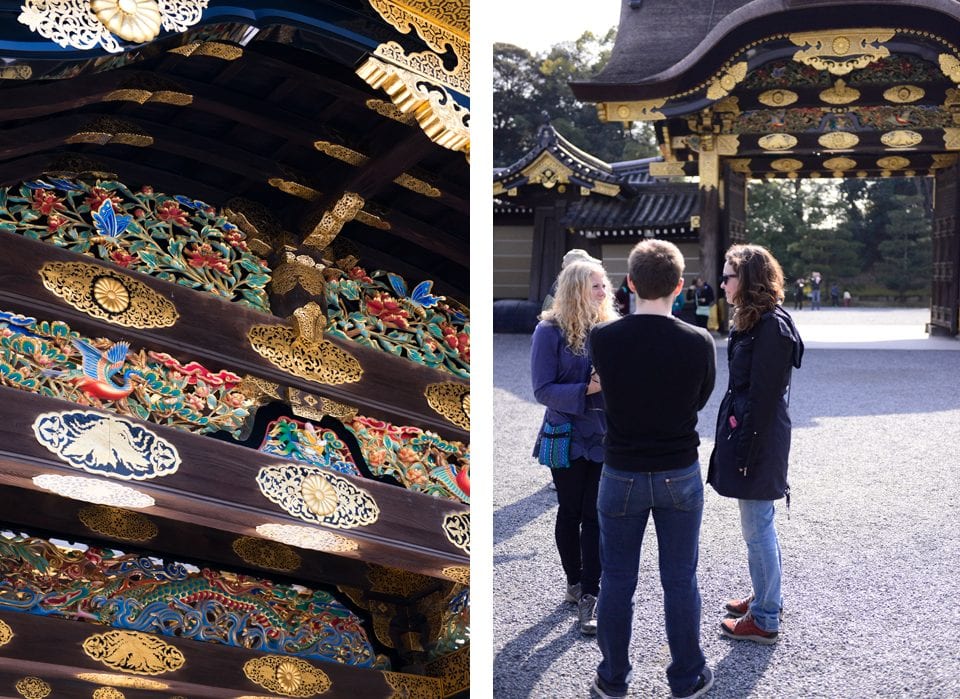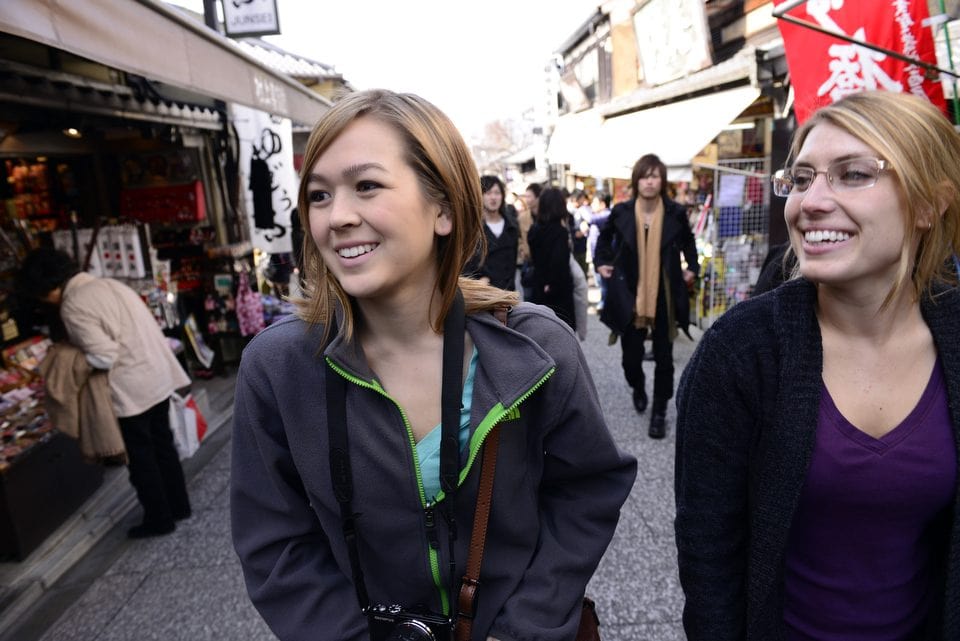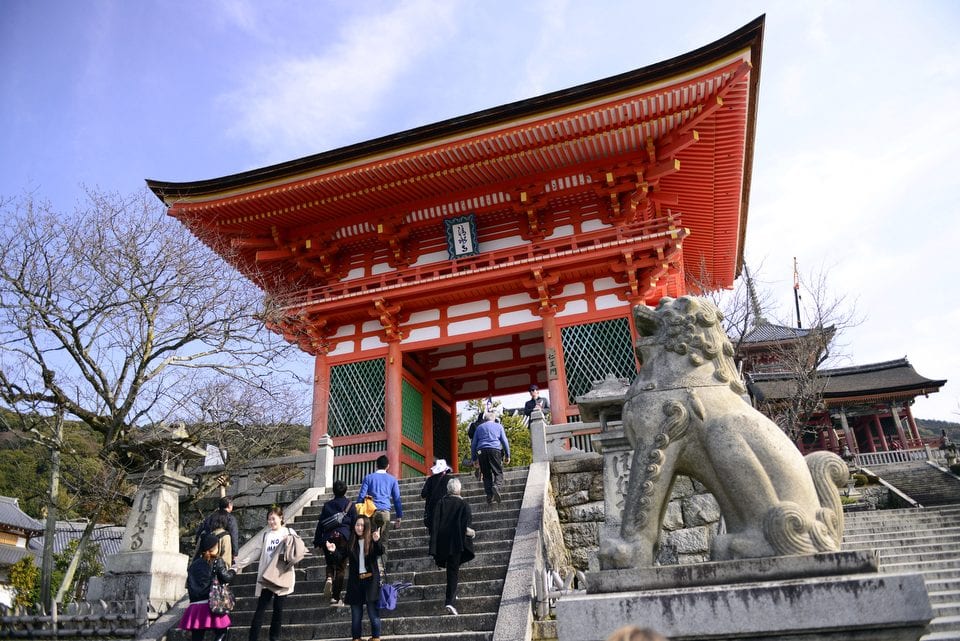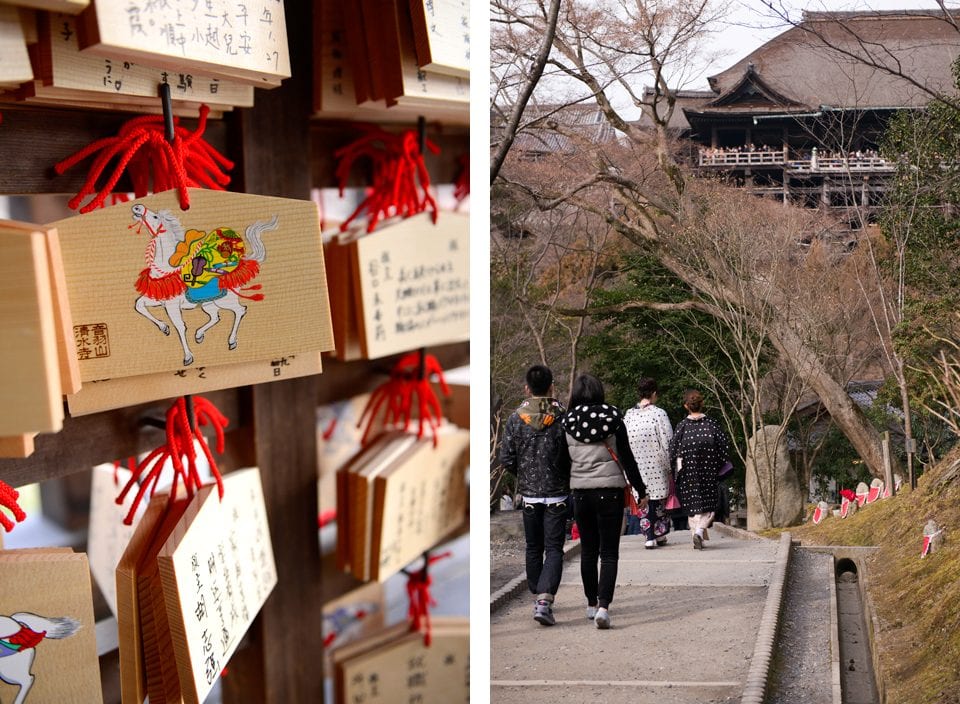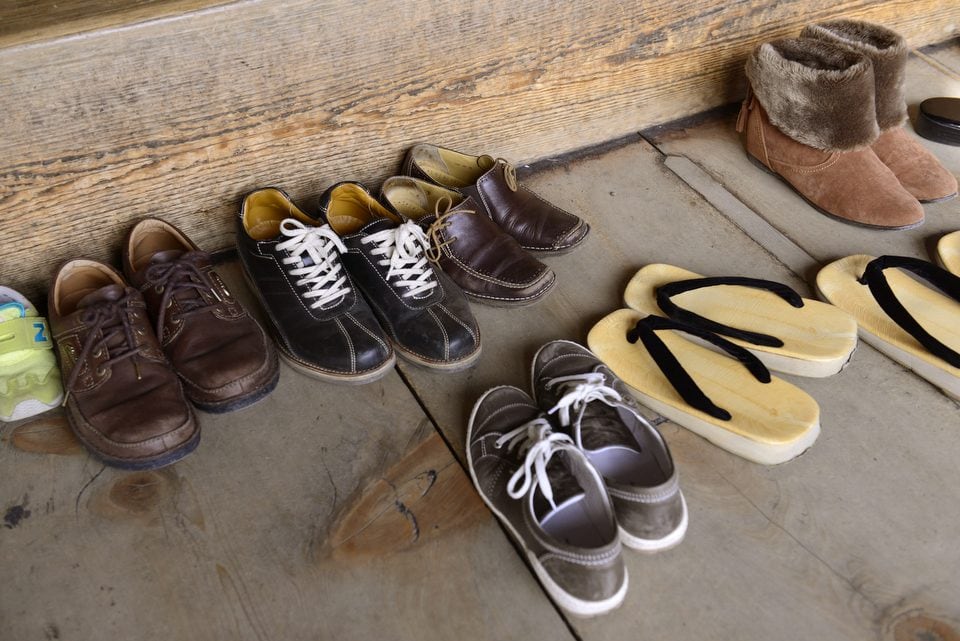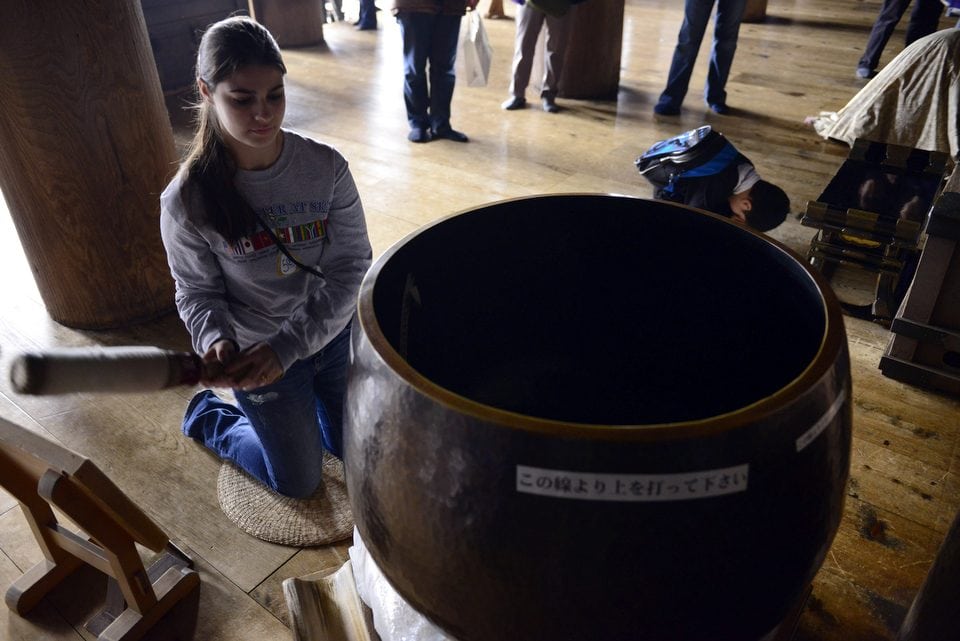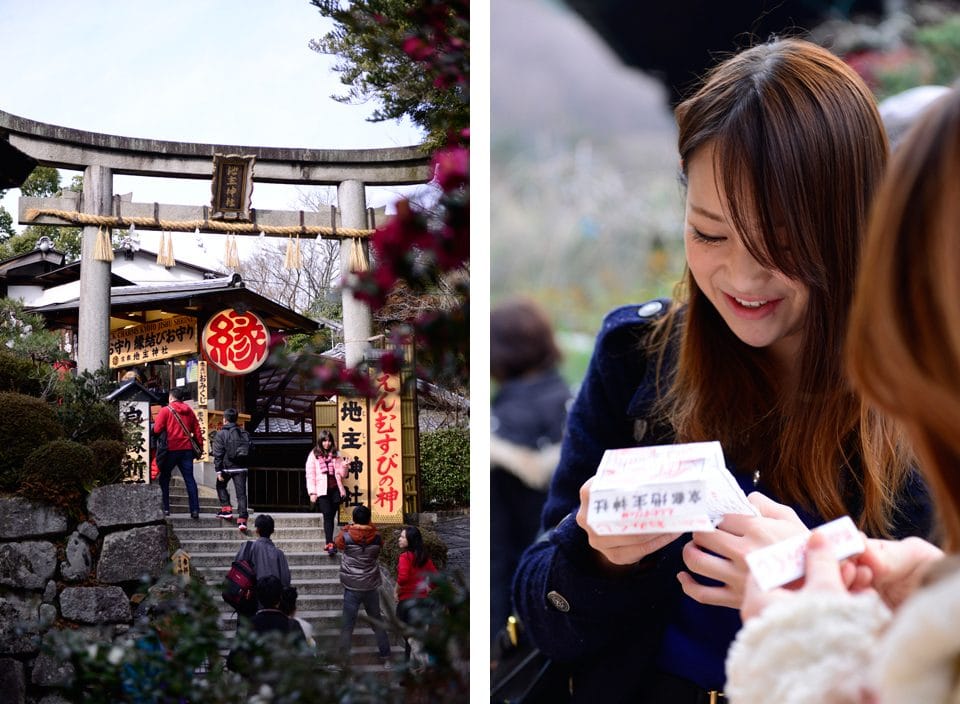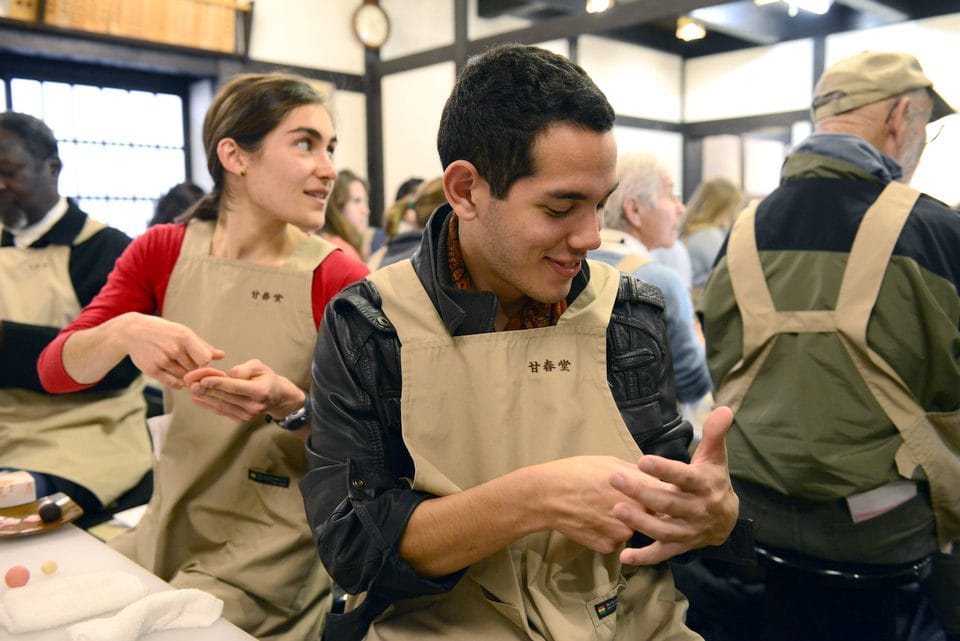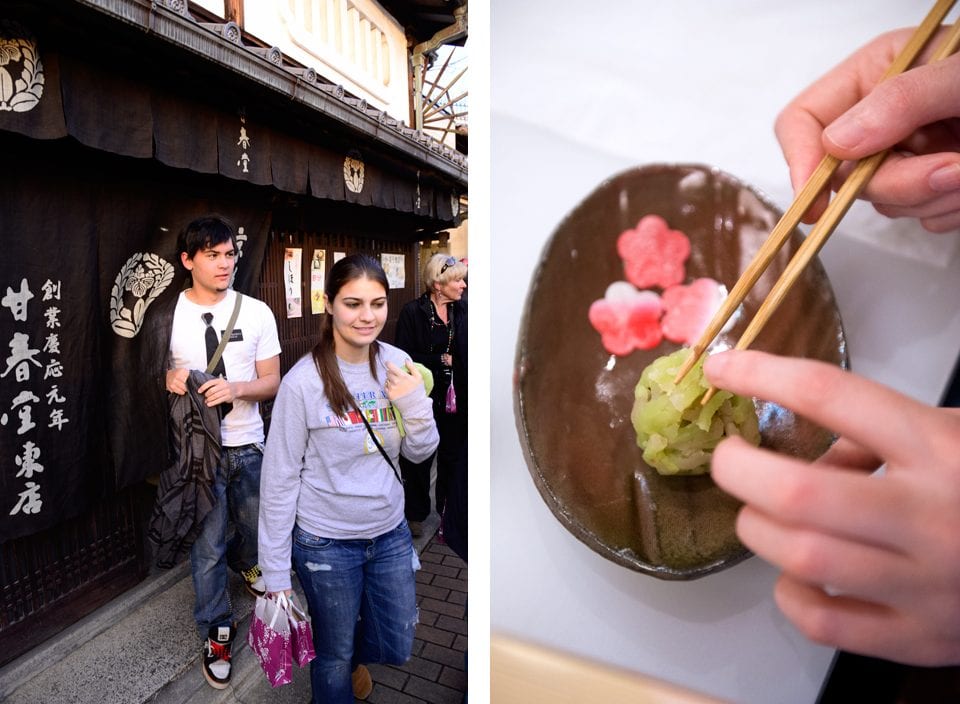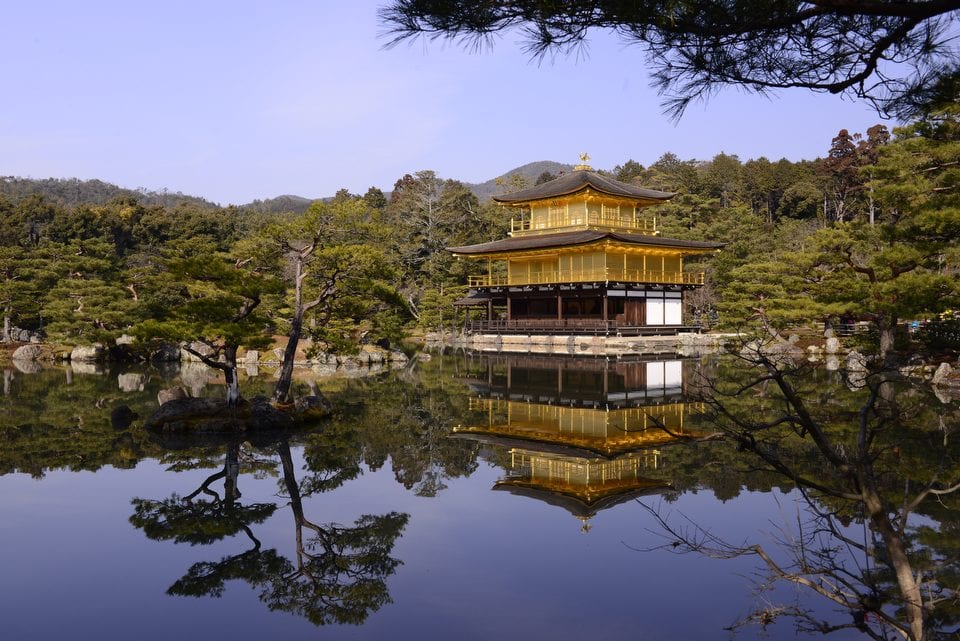While the MV Explorer was docked in Kobe, Japan, voyagers had the opportunity to visit nearby Kyoto on a day-long field program. The program visited three of Kyoto’s historic buildings that are designated as part of a UNESCO World Heritage Site: the Golden Pavilion, Nijo Castle, and Kiyomizu Temple. Then voyagers had the opportunity to make traditional Japanese sweets, or wagashi, at a renowned sweets shop. The day touched on all the senses and left everyone with a taste of the enriching history and culture in this former imperial city.
